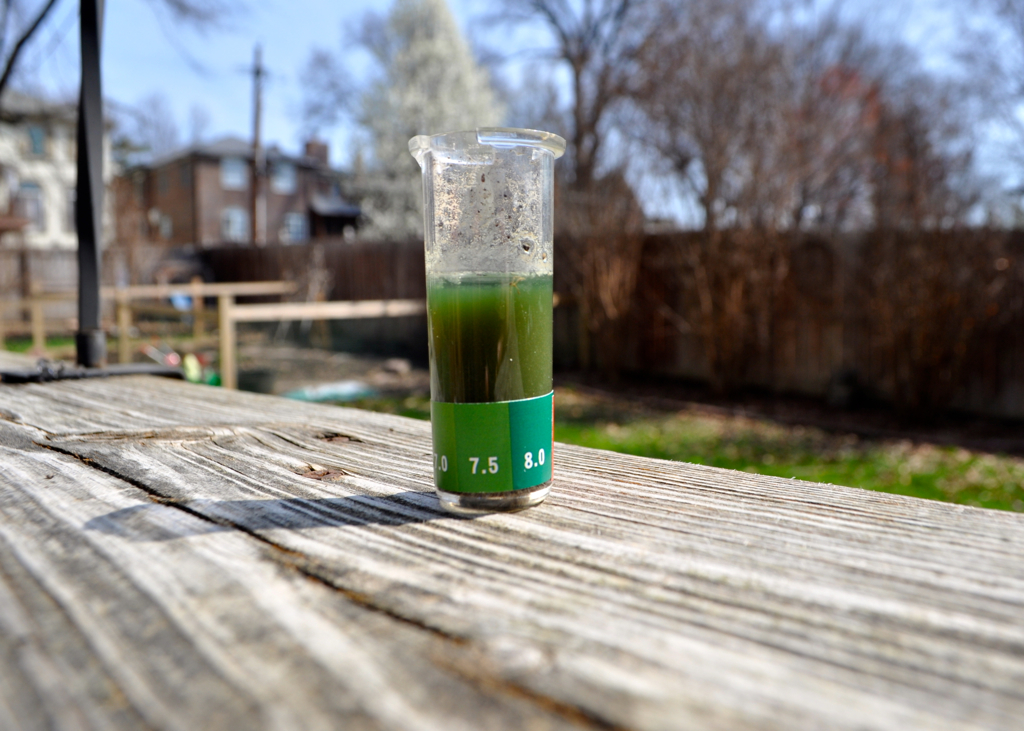Every growing season, we seem to push our knowledge a bit more. We have composting down, now we get the fencing part, and each year we work to improve our soil by adding compost and shredded leaves in the fall. But we still have our share of garden woes. After some reading-up, I found that the pH of your soil is very important- the right pH level in your soil will make a huge difference in the amount of nutrients your plants can absorb, making them hardier and more likely to fend off disease, grow vigorously, and produce plenty of fruits. If soil pH is too high or too low, plants cannot draw what they need from the soil. Also, most beneficial microbes cannot survive in an extreme pH, making the soil “food web” lacking.
So… just for fun, I decided to test our soil. Here’s what to do if you’d like to test your own!
I bought a cheap soil test (this one is similar) and followed the instructions provided.
1. It is best to test soil that is not particularly muddy or wet, so wait for a reasonably dry day.
2. Remove any mulch from the area you are testing and scrape away top two inches of soil. Insert scoop and fill with soil, leveling excess with your finger.

3. Dump the soil into the tube and add tablet. Then add water to fill to the line. Place your finger on top to make a tight seal and shake vigorously until tablet is completely dissolved. 
4. Allow to sit for at least 2 minutes so the soil settles and solution will be clear enough to read the color.
5. Once color appears, compare it to the numbered strip and refer to chart for a read of your soil’s pH.
Ours turned out to be pretty healthy at a 7.5. Experienced gardeners recommend that you try to keep your soil neutral within a 6-7 range (on a scale of 0 – 14, 0 being extremely acidic and 10 being alkaline). We decided not to add anything, but to continue along the same path we have started with the composting and adding of natural materials to keep a good balance. If you test your soil and it turns out to be very acidic or alkaline, the book Building Soils Naturally has gotten great reviews and follows a holistic approach to soil building and organic gardening. I am going to check it out from our local library next time I stop by- it looks worthwhile for the garden nerd in me!
Happy gardening!




I really need to try this. I lost all the flower bulbs I planted last fall and a few rooted plants as well. Aside from battling hard MO clay-packed soil I’m wondering if ph may be an issue for me. Add bunnies and squirrels to that equation and those poor anemones and iris didn’t have a chance! Gardening nerds unite!
I’ve never tested our soil, but this would be fun to do and it could double as a science project.
Cool! Never done this, looks kind of fun.